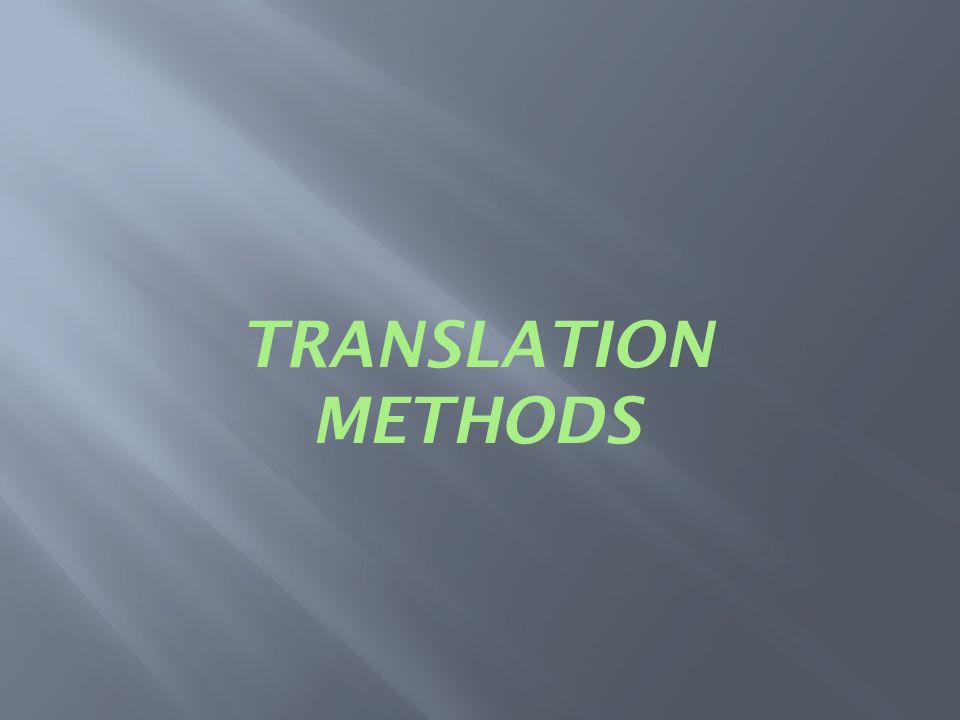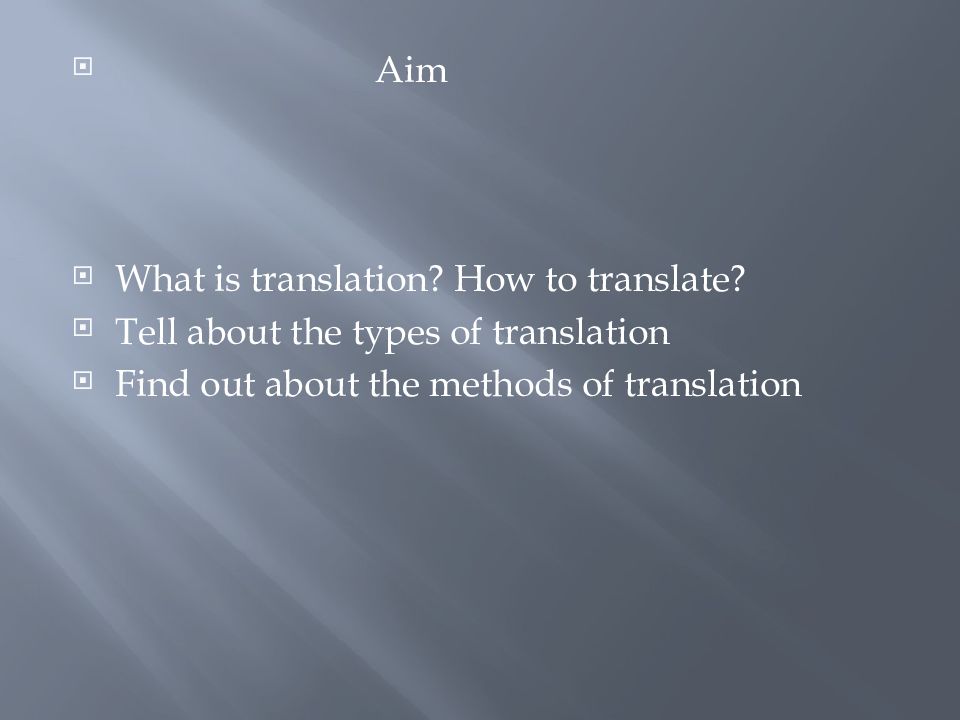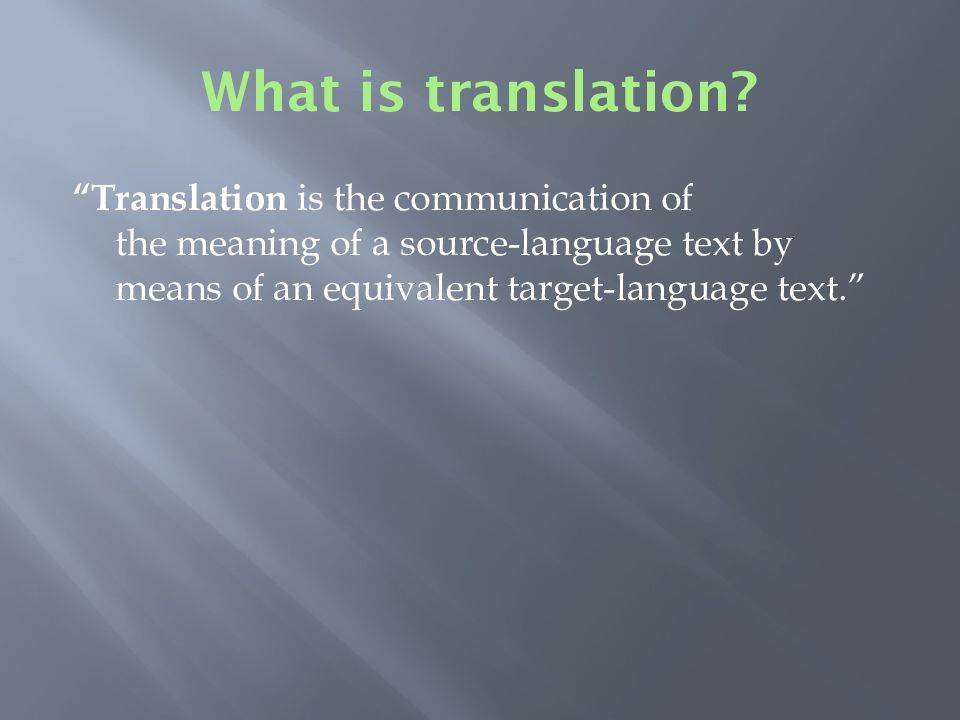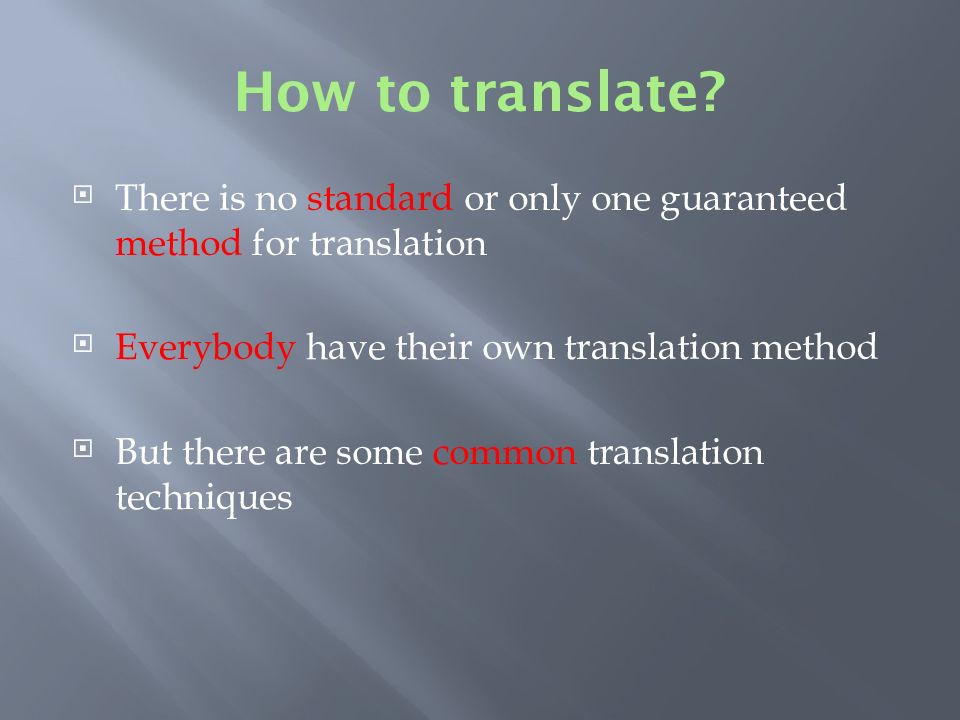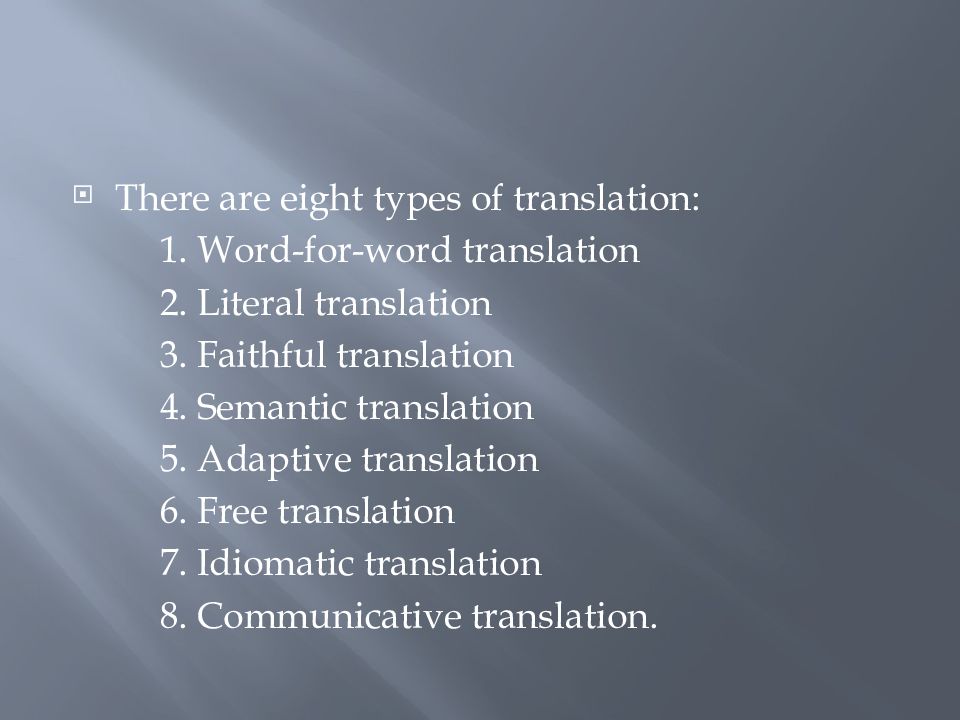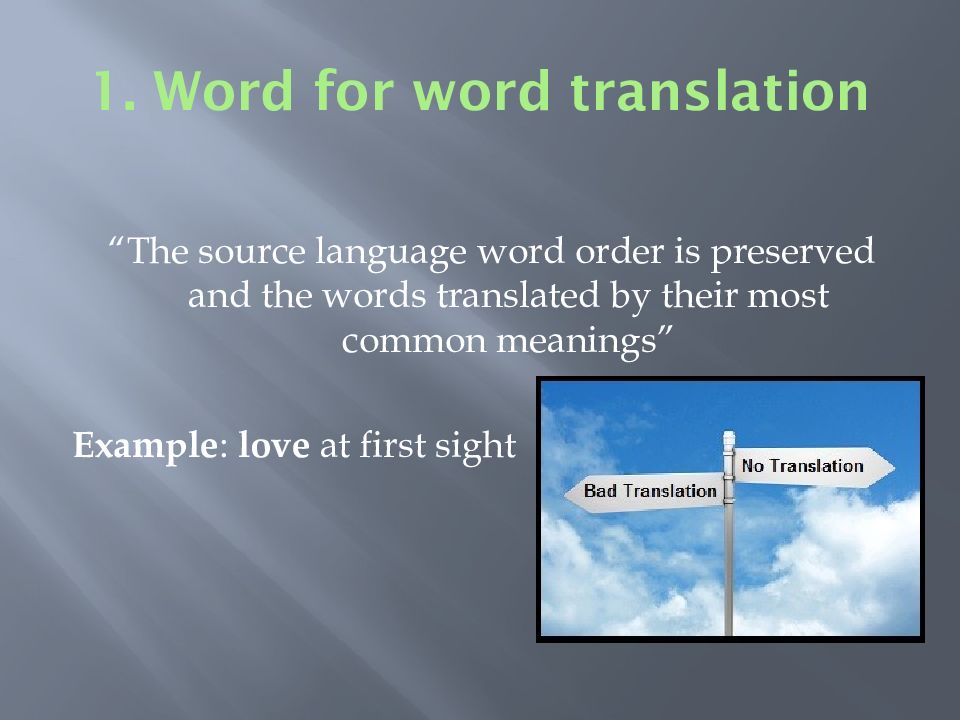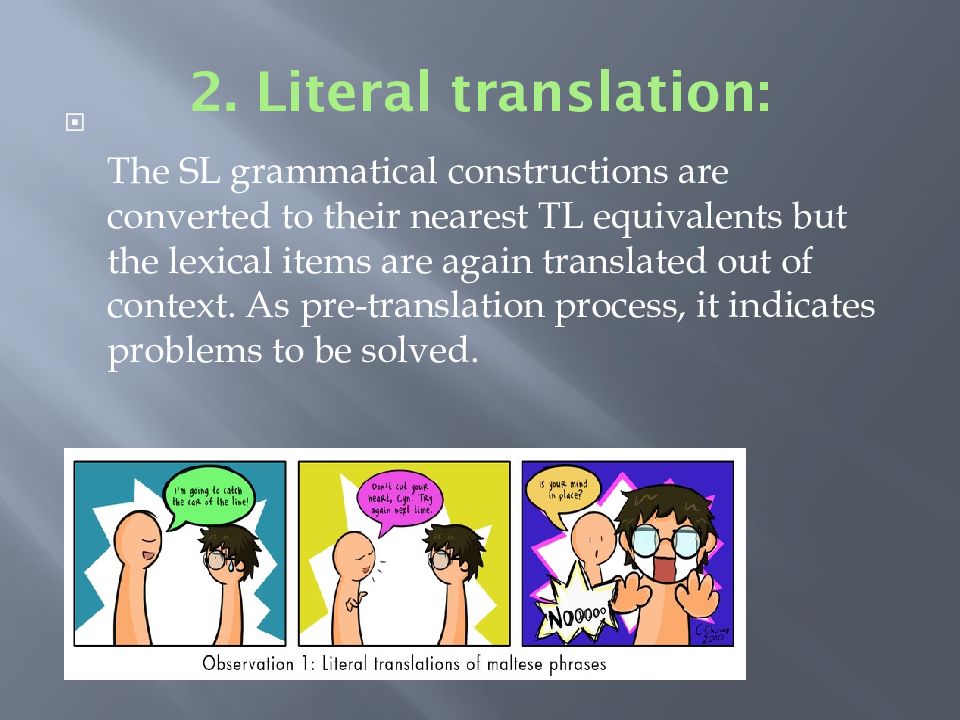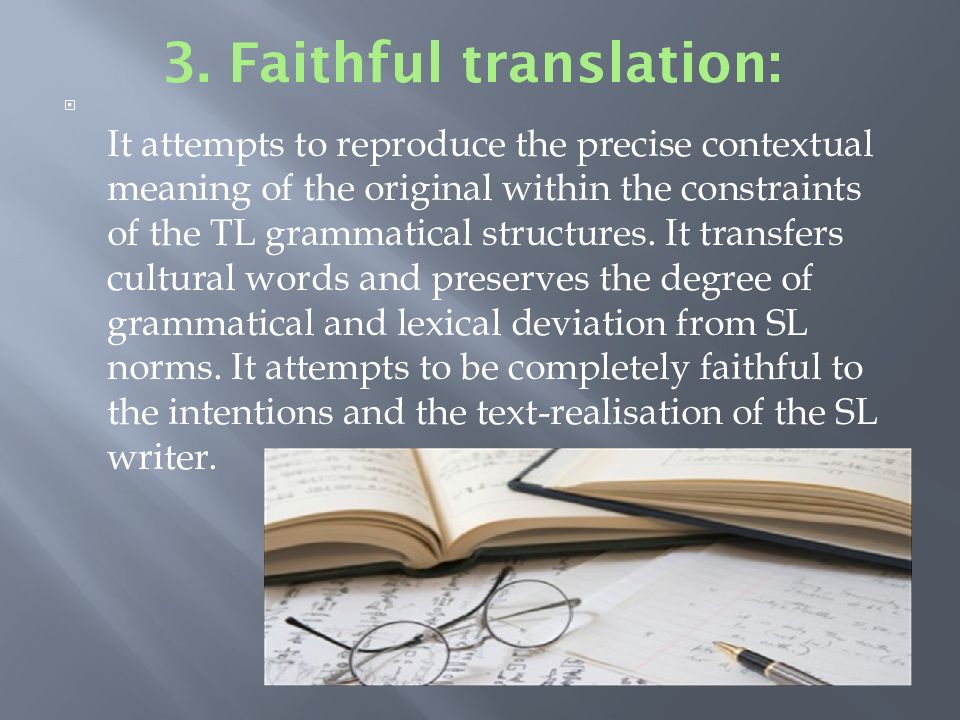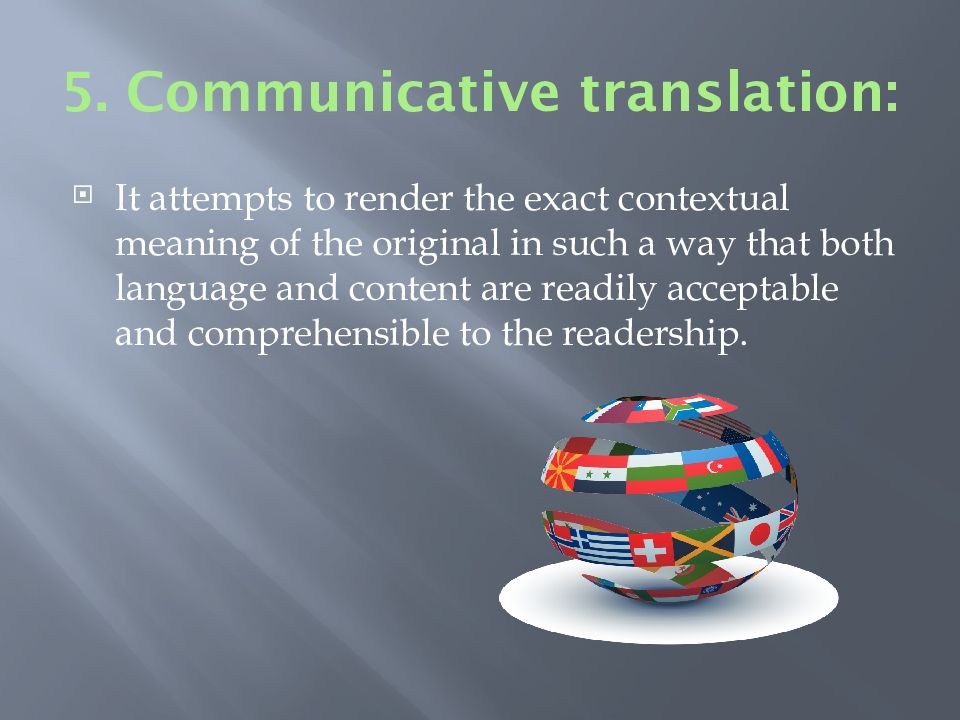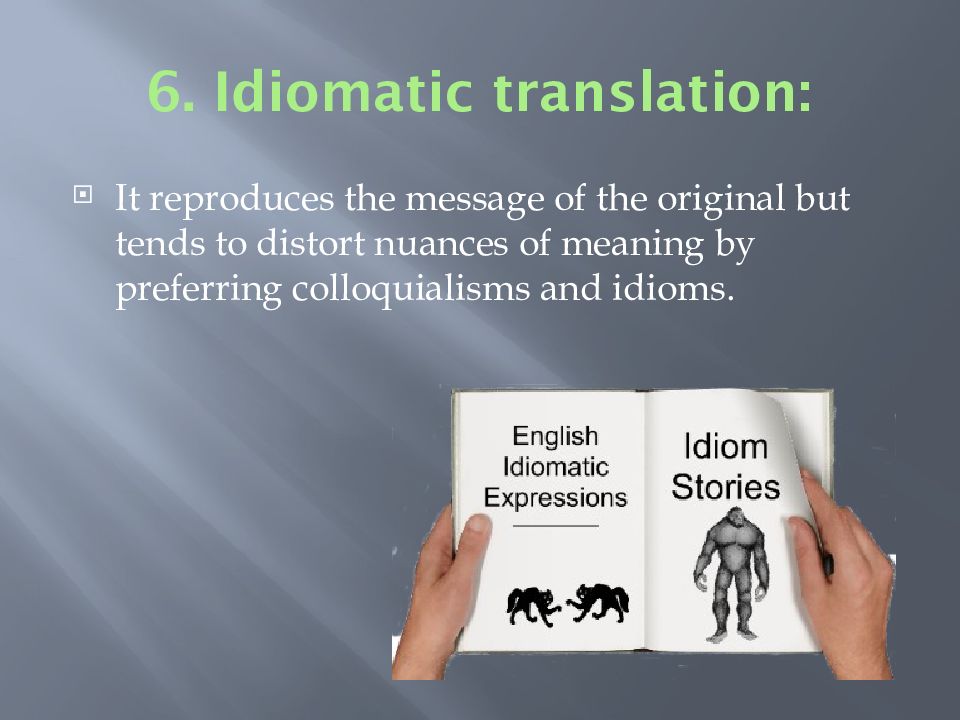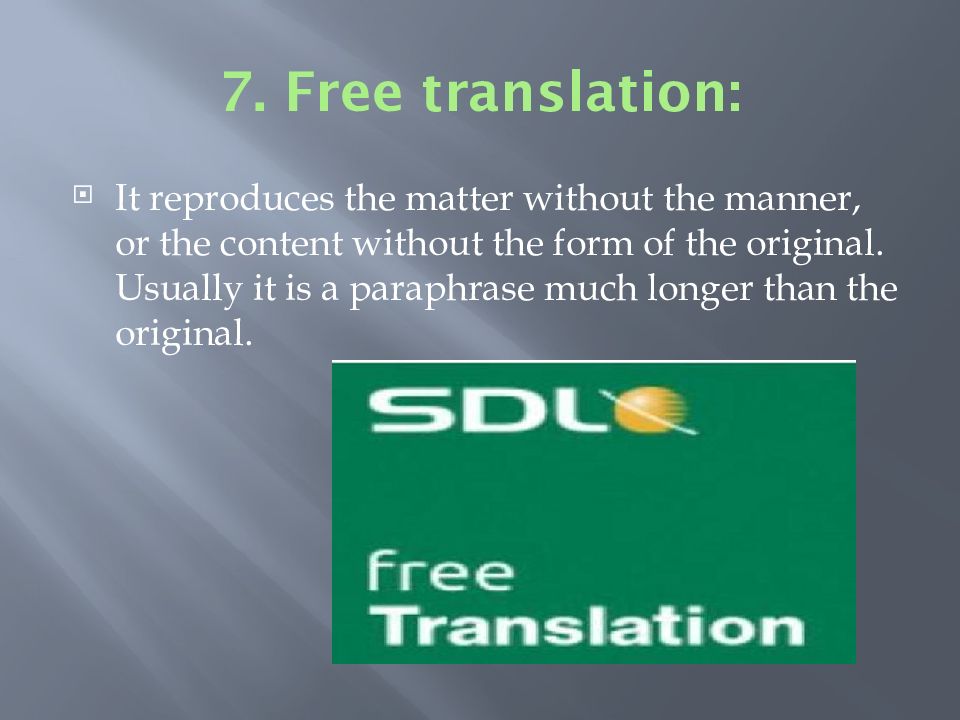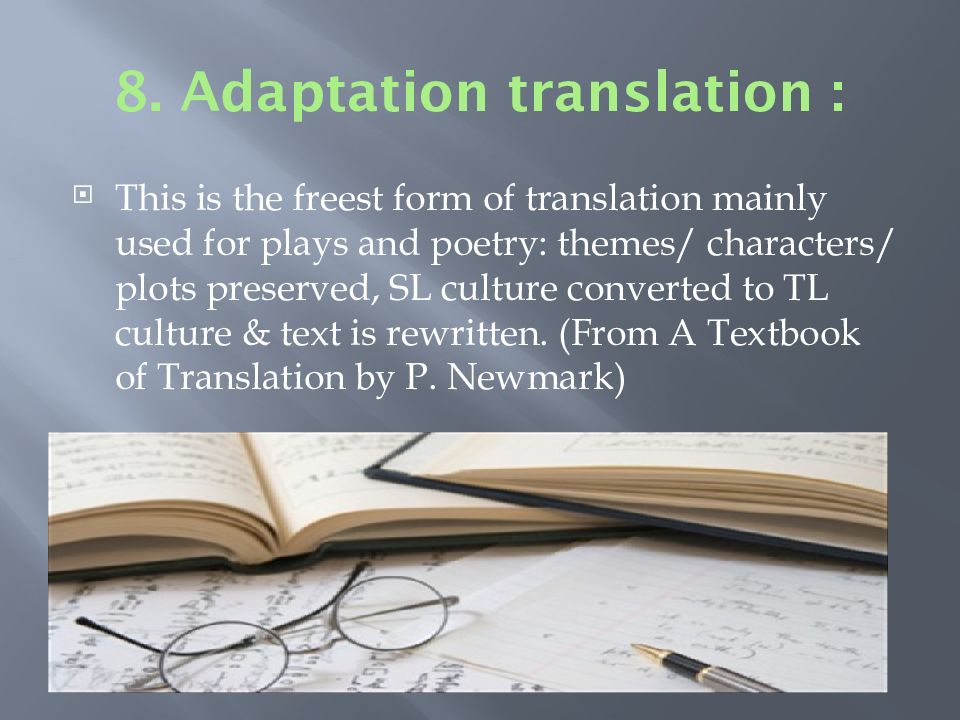Первый слайд презентации: Translation methods
Слайд 2
Aim What is translation? How to translate? Tell about the types of translation Find out about the methods of translation
Слайд 3: What is translation?
“Translation is the communication of the meaning of a source-language text by means of an equivalent target-language text.”
Слайд 4: How to translate?
There is no standard or only one guaranteed method for translation Everybody have their own translation method But there are some common translation techniques
Слайд 5
There are eight types of translation : 1. Word-for-word translation 2. Literal translation 3. Faithful translation 4. Semantic translation 5. A daptive translation 6. F ree translation 7. I diomatic translation 8. C ommunicative translation.
Слайд 6: 1. Word for word translation
“The source language word order is preserved and the words translated by their most common meanings” Example : love at first sight
Слайд 7: 2. Literal translation:
The SL grammatical constructions are converted to their nearest TL equivalents but the lexical items are again translated out of context. As pre-translation process, it indicates problems to be solved.
Слайд 8: 3. Faithful translation:
It attempts to reproduce the precise contextual meaning of the original within the constraints of the TL grammatical structures. It transfers cultural words and preserves the degree of grammatical and lexical deviation from SL norms. It attempts to be completely faithful to the intentions and the text- realisation of the SL writer.
Слайд 9: 4. Semantic translation:
It differs from faithful translation only in as far as it must take more account of the aesthetic value of the SL text, compromising on 7meaning where appropriate so that no assonance, word play or repetition jars in the finished version. It does not rely on cultural equivalence and makes very small concessions to the readership. While `faithful' translation is dogmatic, semantic translation is more flexible.
Слайд 10: 5. Communicative translation:
It attempts to render the exact contextual meaning of the original in such a way that both language and content are readily acceptable and comprehensible to the readership.
Слайд 11: 6. Idiomatic translation:
It reproduces the message of the original but tends to distort nuances of meaning by preferring colloquialisms and idioms.
Слайд 12: 7. Free translation:
It reproduces the matter without the manner, or the content without the form of the original. Usually it is a paraphrase much longer than the original.
Слайд 13: 8. Adaptation translation :
This is the freest form of translation mainly used for plays and poetry: themes/ characters/ plots preserved, SL culture converted to TL culture & text is rewritten. (From A Textbook of Translation by P. Newmark )
